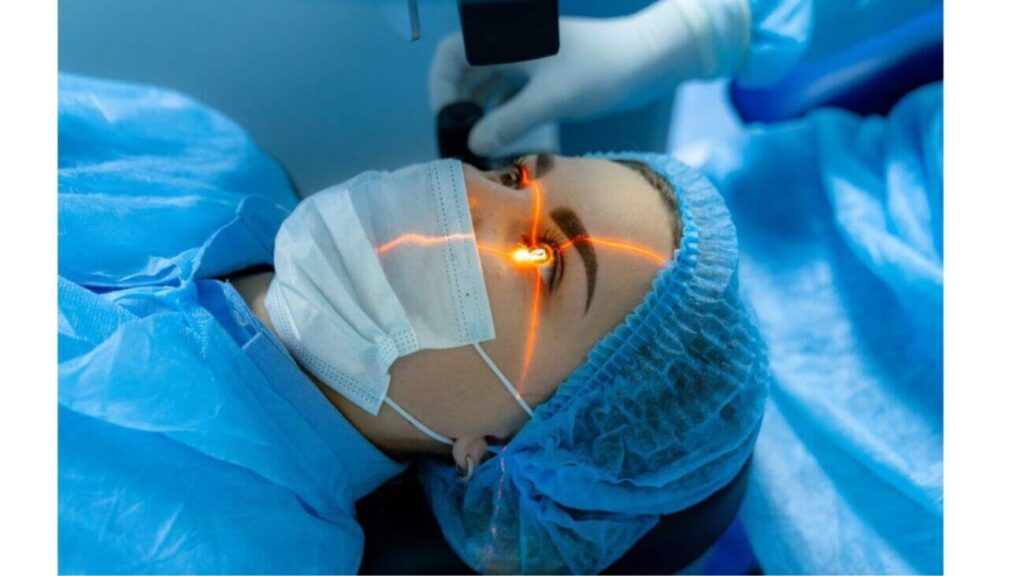Understanding LASIK Surgery
LASIK, or Laser-Assisted In Situ Keratomileusis, is a popular eye surgery designed to correct refractive vision issues such as myopia, hyperopia, and astigmatism. This procedure uses advanced laser technology to reshape the cornea, allowing light to focus correctly on the retina. For many Australians, LASIK represents a chance to achieve clearer vision without the need for glasses or contact lenses.
As the demand for surgery LASIK continues to rise, so too does the need for potential patients to understand the associated costs and what they can expect from the procedure. This article aims to provide a comprehensive overview of LASIK pricing in Australia, helping individuals make informed decisions regarding their eye health.
Before undergoing LASIK, it is essential for patients to have a thorough consultation with a qualified ophthalmologist. During this initial assessment, the eye specialist will evaluate the patient’s vision, overall eye health, and suitability for the procedure. Factors such as corneal thickness, pupil size, and any pre-existing eye conditions will be taken into consideration. This personalised approach ensures that each individual receives tailored advice and care, ultimately leading to better outcomes and satisfaction with the results.
Furthermore, patients should also be aware of the potential risks and side effects associated with LASIK surgery. While the majority of patients experience significant improvements in their vision, some may encounter temporary discomfort, dry eyes, or visual disturbances such as glare or halos. Understanding these possibilities is crucial for setting realistic expectations. Many clinics in Australia offer post-operative follow-up appointments to monitor recovery and address any concerns, ensuring that patients feel supported throughout their journey to clearer vision.

Cost Breakdown of LASIK in Australia
The cost of LASIK surgery in Australia can vary widely depending on several factors, including the clinic, the technology used, and the surgeon’s experience. On average, patients can expect to pay between AUD 2,000 and AUD 3,500 per eye. However, it is essential to consider the various components that contribute to this price.
Factors Influencing LASIK Costs
Several key factors influence the overall cost of LASIK surgery:
- Technology: The type of laser technology used can significantly impact the price. Clinics offering advanced techniques, such as femtosecond laser technology, may charge higher fees due to the increased precision and safety.
- Surgeon Expertise: The experience and reputation of the surgeon can also affect the cost. Highly skilled and reputable surgeons may command higher fees, but their expertise can lead to better outcomes.
- Location: The geographical location of the clinic plays a role in pricing. Clinics in metropolitan areas may charge more than those in regional areas due to higher overhead costs.
What’s Included in the Price?
When evaluating the cost of LASIK, it is crucial to understand what is included in the quoted price. Most clinics will provide a comprehensive package that covers:
- Pre-operative consultations
- The LASIK procedure itself
- Post-operative follow-up visits
- Any necessary medications or eye drops
It is advisable to clarify with the clinic exactly what is included in the quoted price to avoid any unexpected expenses later on.
Additionally, many clinics offer financing options to help patients manage the costs associated with LASIK. This can include payment plans that allow patients to spread the cost over several months or even years, making the procedure more accessible to a broader range of individuals. Some clinics may also provide promotional discounts or package deals, particularly during certain times of the year, which can further reduce the financial burden.
It is also worth noting that while the initial cost may seem high, many patients find that LASIK surgery is a worthwhile investment in their long-term vision health. Unlike traditional eyewear or contact lenses, which require ongoing expenses for replacement and maintenance, LASIK can provide a permanent solution, potentially saving money in the long run. Patients should consider their lifestyle and vision needs when evaluating the overall value of the procedure.

Insurance and Financing Options
For many Australians, the cost of LASIK surgery can be a significant financial commitment. Fortunately, there are various options available to help manage these expenses.
Health Insurance Coverage
While most health insurance policies do not cover LASIK surgery, some may offer partial coverage or benefits for corrective eye surgery. It is essential to check with your health insurance provider to determine if any benefits apply. Even if LASIK is not covered, some policies may provide coverage for pre-operative assessments or post-operative care. Additionally, it is advisable to review the specifics of your policy, as some insurers might have partnerships with certain clinics that could potentially lead to discounts or rebates, making the overall cost more manageable.
Payment Plans and Financing
Many clinics offer payment plans or financing options to make LASIK more accessible. These plans allow patients to spread the cost of the procedure over several months or years, making it easier to manage financially. It is worth inquiring about interest rates and any additional fees associated with financing options to ensure transparency. Moreover, some clinics may offer promotional financing periods with little to no interest, which can significantly alleviate the financial burden. Patients should also consider the total cost of the procedure, including any potential follow-up treatments or enhancements, as these can impact the overall expense and should be factored into any financial planning. Understanding all these elements can empower patients to make informed decisions regarding their eye care and financial commitments.
Realistic Expectations Post-Surgery
Understanding what to expect after LASIK surgery is crucial for patients. While many individuals experience significant improvements in their vision, it is essential to have realistic expectations regarding the outcomes.
Recovery Process
The recovery process following LASIK is typically quick, with many patients noticing improved vision within a day or two. However, some may experience temporary side effects, such as dry eyes, glare, or halos around lights. These symptoms usually resolve within a few weeks, but it is essential to follow the post-operative care instructions provided by the surgeon. Additionally, patients are often advised to rest their eyes and avoid strenuous activities for a short period to facilitate optimal healing. Regular follow-up appointments are also crucial, as they allow the surgeon to monitor the healing process and address any concerns that may arise.
Long-Term Results
Most patients achieve 20/25 vision or better after LASIK, allowing them to perform daily activities without glasses or contact lenses. However, some individuals may still require glasses for specific tasks, such as reading or driving at night. It is important to discuss these expectations with the surgeon during the consultation process. Furthermore, it is worth noting that while LASIK can significantly reduce dependence on corrective lenses, age-related vision changes, such as presbyopia, can still occur. This natural progression may necessitate the use of reading glasses in the future, even for those who have undergone successful LASIK surgery. Therefore, patients should maintain an open dialogue with their eye care professionals to ensure they are well-informed about their long-term vision health and any potential adjustments needed as they age.

Comparing LASIK with Other Vision Correction Options
While LASIK is a popular choice for vision correction, it is not the only option available. Understanding the alternatives can help individuals make informed decisions about their eye health.
PRK (Photorefractive Keratectomy)
PRK is another type of laser eye surgery that corrects vision by reshaping the cornea. Unlike LASIK, PRK does not involve creating a corneal flap, making it a suitable option for individuals with thinner corneas. The recovery time for PRK is longer than LASIK, and patients may experience more discomfort during the initial healing phase. However, many patients appreciate that PRK can provide excellent long-term results, particularly for those who may not be candidates for LASIK due to corneal thickness or other factors. Additionally, PRK is often recommended for individuals with active lifestyles or those who participate in contact sports, as the absence of a flap reduces the risk of complications associated with trauma to the eye.
Contact Lenses and Glasses
For some individuals, traditional corrective lenses may still be the best option. While LASIK offers the convenience of not needing glasses or contacts, many people find that their lenses provide adequate vision correction without the need for surgery. It is essential to weigh the pros and cons of each option before making a decision. Contact lenses, for instance, come in various types, including daily disposables, extended wear, and toric lenses for astigmatism, allowing for a tailored approach to vision correction. Glasses, on the other hand, not only serve a functional purpose but can also be a fashion statement, with countless styles and frames available to suit personal tastes. Furthermore, both glasses and contact lenses can be easily adjusted or replaced, offering flexibility that surgical options may not provide. Ultimately, the choice between these methods often hinges on lifestyle preferences, comfort, and the specific vision needs of the individual.
Choosing the Right LASIK Clinic
Finding the right clinic for LASIK surgery is a critical step in the process. With so many options available, it is important to consider various factors to ensure a safe and successful experience.
Research and Reviews
Before selecting a clinic, it is advisable to conduct thorough research. Look for clinics with positive patient reviews and testimonials. Online platforms and forums can provide valuable insights into the experiences of others who have undergone LASIK at specific clinics.
Consultation and Communication
Scheduling a consultation with potential clinics is an essential step in the decision-making process. During this visit, patients should feel comfortable asking questions and discussing their concerns. A reputable clinic will provide clear answers and ensure that patients fully understand the procedure, risks, and expected outcomes.
Conclusion
LASIK surgery can be a life-changing procedure for those seeking to improve their vision. While the costs can vary significantly, understanding the factors that contribute to pricing and exploring financing options can help make the procedure more accessible. By setting realistic expectations and choosing the right clinic, individuals can embark on their LASIK journey with confidence.
Ultimately, the decision to undergo LASIK should be made after careful consideration and consultation with a qualified eye care professional. With the right information and support, achieving clearer vision is within reach for many Australians.

